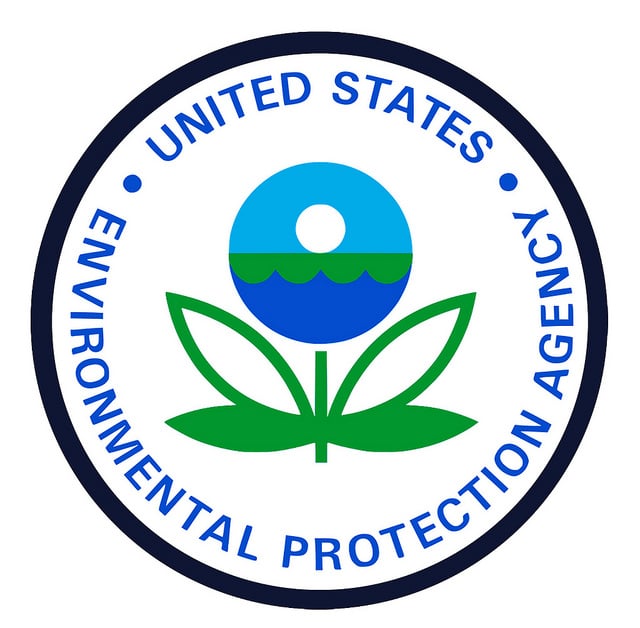On May 2, the Trump Administration issued its budget proposal for federal Fiscal Year (FY) 2026 (October 1, 2025 through September 30, 2026). The administration proposes a $582,381,000 budget for the Occupational Safety and Health Administration (OSHA), which would be a 7.9% ($49,928,000) decrease from OSHA’s adopted 2025 budget of $632.3 million (the Biden Administration had proposed $655.5 million; I wrote about it HERE). The remainder of this note summarizes the Administration proposal.
Audit, Compliance and Risk Blog
Trump Administration proposes limited cuts in OSHA budget
Posted by Jon Elliott on Fri, Jul 18, 2025
Tags: OSHA, workplace safety, Trump, Trump Administration, Workplace Safety Guidelines, Regulatory Compliance, Safety Standards, FY 2026 Budget, Federal Budget Proposal, Occupational Safety
The Trump Administration has issued its budget proposal for federal Fiscal Year (FY) 2026 (October 1, 2025 through September 30, 2026), including a 54% cut in the Environmental Protection Agency (EPA) budget, from $9.1 billion in FY 2025, to $4.16 billion for FY 2026. Many of the cuts apply to grant programs, and the proposal would cut staffing by 9%, from 14,130 full-time-equivalent employees (FTE) to 12,856. Readers should note that these cuts are comparable to those proposed by President Trump during his first term; EPA’s actual annual budget depends on that adopted by Congress (or a continuing resolution in lieu of an adopted budget). The remainder of this note summarizes EPA’s proposed FY2026 budget, including proposed reductions, drawn from EPA’s “Budget in Brief” (68 pages) and “Justification of Appropriation Estimates” (736 pages).
Read More
Tags: EPA, RCRA, tsca, Clean Air Act, Environmental Policy, Climate, EPA Regulations, EPA Standards, Trump, Trump Administration, Climate Reporting
OSHA reports on most-cited violations in fiscal year 2024
Posted by Jon Elliott on Thu, Jun 26, 2025
The US federal Occupational Safety and Health Administration (OSHA) has reported a list of the top 10 most frequently cited standards following inspections of worksites by federal OSHA for all industries, during federal Fiscal Year (FY 2024). The remainder of this note provides OSHA’s list, with links to the standards (i.e., general industry standards) I’ve written about in other notes.
Read MoreTags: OSHA, Safety and Health at Work, EHSCompliance, Safety Regulations, Worker Safety, Regulatory Compliance, Health and Safety, Fall Prevention, Safety Training
The Canadian Council of Ministers of the Environment (CCME) has issued Excess Soil Reuse Guidance, with individual elements and an over-arching framework that jurisdictions can consider (and perhaps adopt, as published or with local variations) when establishing their own excess soil reuse regimes, and for landowners and consultants to consider when designing and implementing construction and remediation projects that generate excess soil. The remainder of this note summarizes this 51 page guidance document.
Read MoreTags: Environmental, EHS, sustainability, EnviromentalCompliance, EHSCompliance, Sustainability Strategy, Excessive Soil, Soil Reuse, CCME, Environmental Management
The US federal Occupational Safety and Health Administration (OSHA) conducted its twelfth annual “National Safety Stand-Down to Prevent Falls in Construction” during May 5-9, 2025. The Stand-Down focused on fall hazards and fall prevention, emphasizing safety demonstrations, trainings and hazard recognition activities. Falls are a leading cause of workplace injuries and deaths in construction, and can also be important hazards in non-construction locations where workers use ladders or work in elevated locations. The remainder of this note summarizes approaches to fall hazards and fall protection.
Tags: Health & Safety, OSHA, Safety and Health at Work, workplace safety, Cal/OSHA, Injury, Safety Regulations, Worker Safety, Risk Management, Fall Prevention
SEC ends legal defense of climate-related disclosure requirements for public companies
Posted by Jon Elliott on Thu, May 15, 2025
On March 27, 2025 the US Securities and Exchange Commission (SEC) voted to stop defending rules adopted in 2024 (during the Biden administration) that would have required selected “public companies” (i.e, listed on national securities exchanges) to provide “climate-related disclosures for investors” in their registration statements and annual reports. SEC had stayed these rules’ effectiveness after being sued by two energy companies, which were later joined by other plaintiffs as well as state and nonprofit supporters of the rules. The latest SEC decision ends the agency’s defense in that litigation.
Read MoreTags: SEC, Environmental Policy, Climate, ESG, Environmental Compliance, Risk Management, Sustainability Reporting, Climate Disclosure, Climate Risk
EPA realigns enforcement policies to match new administration
Posted by Jon Elliott on Fri, May 09, 2025
On March 12, the US Environmental Protection Agency (EPA) issued a memorandum announcing significant revisions to the agency’s enforcement policies, entitled “Implementing National Enforcement and Compliance Initiatives Consistently with Executive Orders and Agency Priorities.” The memo directs EPA’s civil and criminal enforcement staffs, revising existing Biden-era policies (which I last wrote about HERE) to conform with President Trump’s executive orders (EOs) and policy statements by new EPA administrator Zeldin. The remainder of this note summarizes this new direction.
Read MoreTags: EHS, EPA, NECI, Trump Administration, Environmental Justice rollback, Air toxics enforcement, EPA enforcement, NECI policy changes, Trump Executive Orders
EPA delays deadline to report 2024 greenhouse gas emissions
Posted by Jon Elliott on Mon, Apr 28, 2025
Since 2011, the US Environmental Protection Agency (EPA) has administered an extensive Greenhouse Gas Reporting Program (GHGRP), which requires thousands of facilities and organizations to report annual emissions of greenhouse gases (GHGs) (40 CFR part 98). Although reports are usually due by March 31 of the following year, EPA has delayed the deadline for reporting year (RY) 2024 until May 30, 2025. EPA cites delays in making the new version of its Electronic Greenhouse Gas Reporting tool (e-GGRT) available.
Read More
Tags: EPA, Greenhouse Gas, sustainability, GHGRP, Environmental Compliance, Environmental Regulations, Carbon Reporting, GHG Reporting, Climate Reporting, Compliance Update, Emission Reporting, eGGRT
California guidance for worker protection during post-wildfire cleanups
Posted by Jon Elliott on Wed, Apr 23, 2025
In the aftermath of January’s massive southern California wildfires, the California Division of Occupational Safety and Health (Cal/OSHA) has recompiled and highlighted its guidance for post-wildfire cleanup. Although this guidance is not unique (I’ve written about similar websites HERE), it provides a timely reminder to organizations in areas that may be subject to wildfires, and to other harmful incidents as well. The remainder of this note summarizes Cal/OSHA’s latest compilation.
Read MoreTags: workplace safety, Cal/OSHA, Fire Safety, Wildfire Cleanup, Occupational Health, Hazard Assessment, Environmental Health and Safety, Wildfire Preparedness, Health Hazards, Safety Regulations, Fire Risk Management, Emergency Response, Worker Safety, Post-Wildfire Recovery, Workplace Safety Guidelines
Coming to North America? EU proposes to narrow Corporate Sustainability Reporting Directive requirements
Posted by Jon Elliott on Thu, Apr 10, 2025
On February 26, the European Union’s (EU’s) European Commission issued its “Omnibus I” proposal to “recalibrate” the EU’s Corporate Sustainability Reporting Directive (CSRD), by reducing reporting requirements and excluding smaller entities. The CSRD was adopted in November 2022 and took effect in January 2023 (I wrote about it HERE), providing reporting requirements that are being phased in during 2024-2028. CSRD superseded and narrowed the EU’s previous Non-Financial Reporting Directive (NFRD; which I discussed HERE). The remainder of this note discusses the proposed changes.
Read MoreTags: CSRD, ESG, Hazardous Material, RegulatoryUpdates, Risk Management, Sustainability Reporting, EU Regulations, Sustainability Strategy, Corporate Sustainability, EU Compliance









